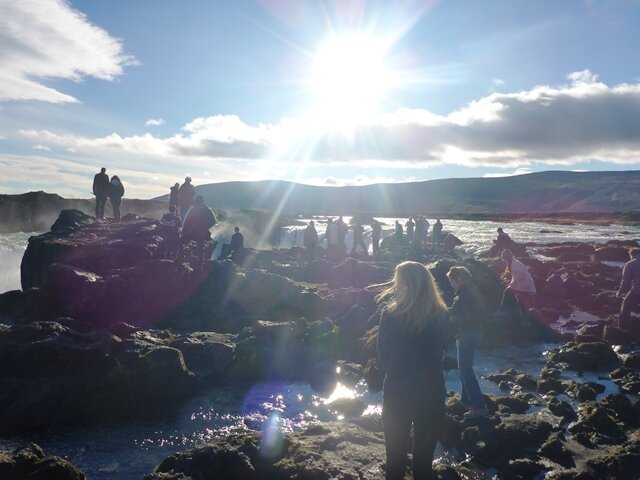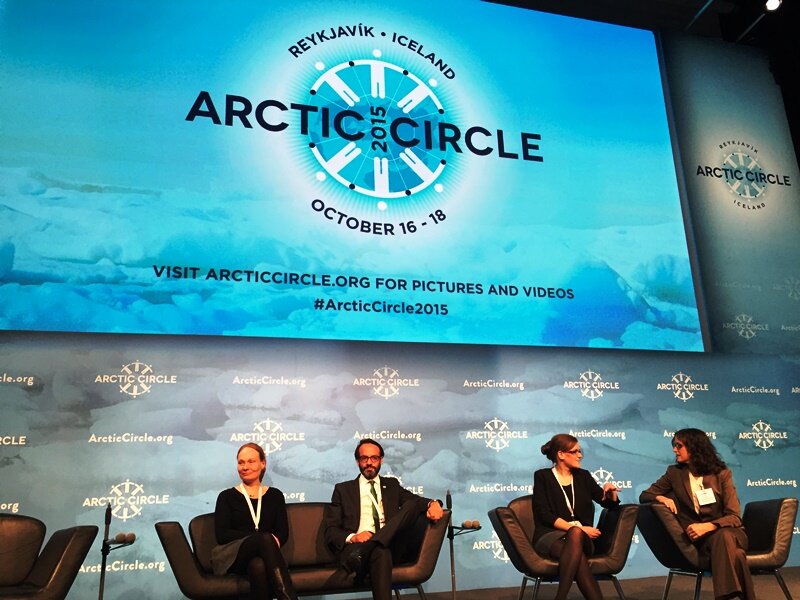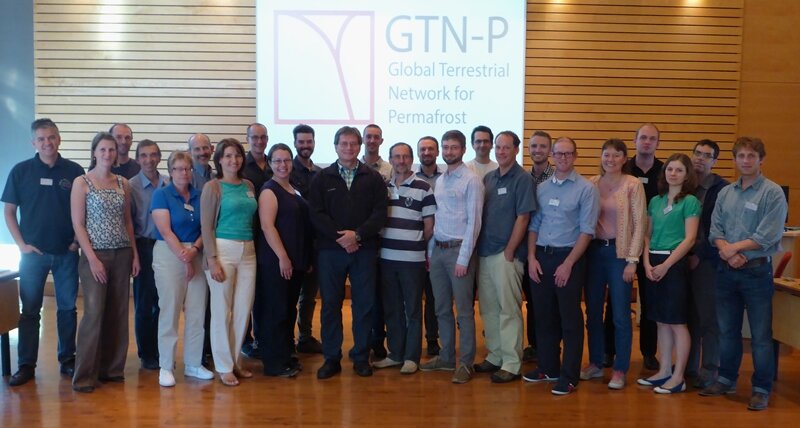Herschel Island 2014: The team
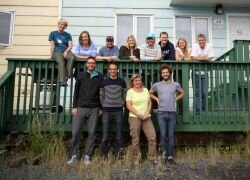 (Photo: Jaroš Obu) Group photo of participants. From left to right; up: Clara Flintrop, Isla Myers-Smith, Gavin Manson, Ashley Rudy, George Tanski, Scott Lamoureux, Anna Konopczak and Angus Robertson. Down: Jaroš Obu, Hugues Lantuit, Ute Bastian and Samuel Stettner.Thursday, 24th of July 2014
(Photo: Jaroš Obu) Group photo of participants. From left to right; up: Clara Flintrop, Isla Myers-Smith, Gavin Manson, Ashley Rudy, George Tanski, Scott Lamoureux, Anna Konopczak and Angus Robertson. Down: Jaroš Obu, Hugues Lantuit, Ute Bastian and Samuel Stettner.Thursday, 24th of July 2014
A year has passed and we, the COPER group members from AWI, are on our way to Herschel Island again. As always, under the leadership of Hugues Lantuit but this year with slightly different members than last year: COPER PhD students Anna Konopczak, George Tanski and Jaroš Obu, master student Samuel Stettner and laboratory technician Ute Bastian.
As in the previous year, the vegetation specialist from Edinburgh Isla Myers-Smith will also be joining us with her assistant Clara Flintrop. Our research partners from Geological Survey of Canada Gavin Manson and technician Angus Robertson are also joining us.
And, this year, we are welcoming Scott Lamoureux and Ashley Rudy from the Queens University and Nina Stark and Brandon Quinn from Virginia Tech University who will be new to the team.
And what is our research about?
We are investigating the thawing of permafrost on Herschel Island in the Canadian Arctic and the impact of this thaw to the Arctic carbon cycle. The cold temperatures in tundra ecosystems slow down the degradation and decomposition of dead plants. Organic material from these plants accumulates in the soil over centuries and becomes frozen in permafrost. Now, with the rising temperatures and thawing of permafrost, this organic material is becoming exposed. Once thawed, the organic material is degraded by different microorganisms producing carbon dioxide and methane which are greenhouse gasses and can cause additional warming of the atmosphere.
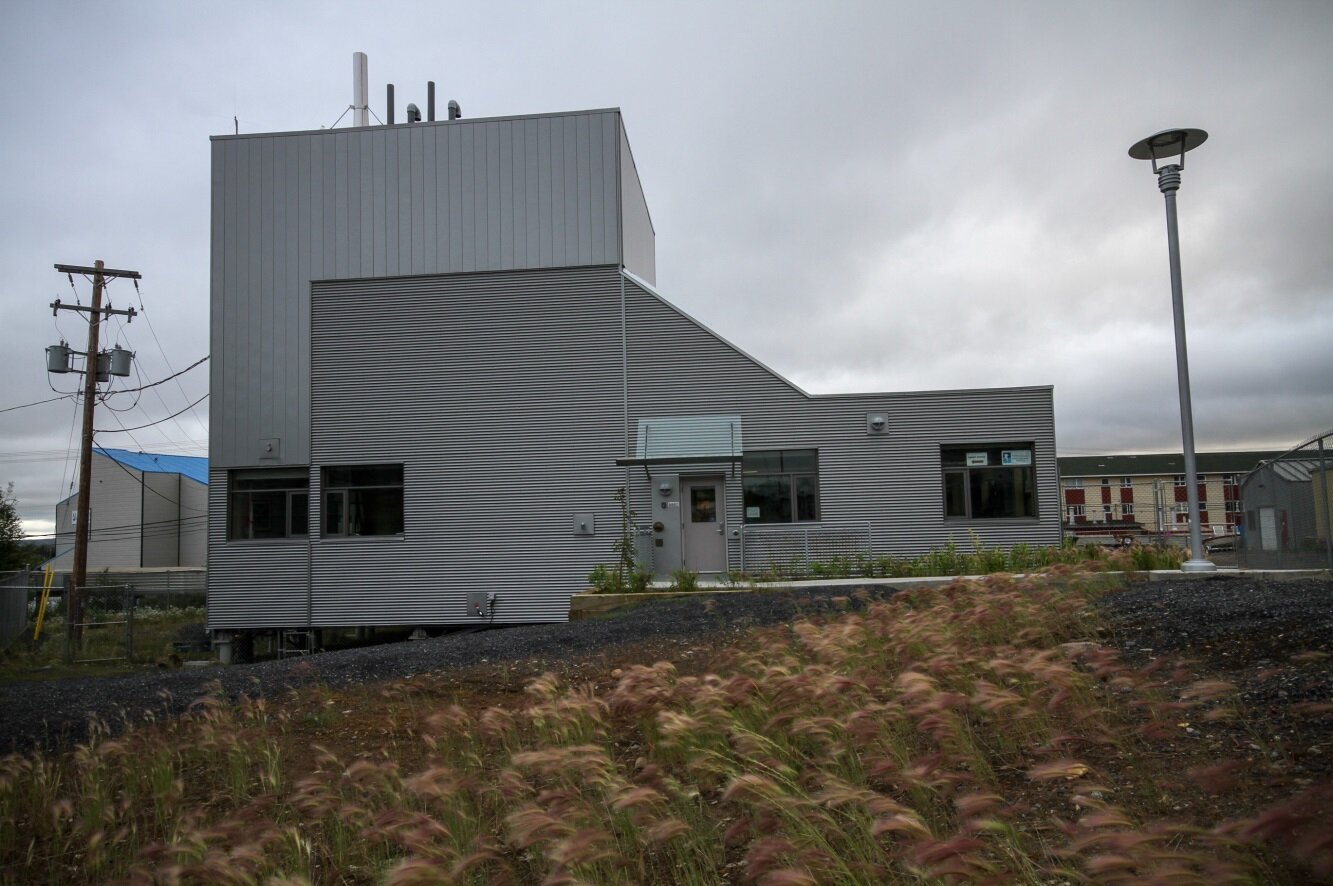 (Photo: Jaroš Obu) Our preparation takes place at our logistical partner Aurora Research Institute.The consequence of the fast warming in the Arctic means that sea ice retreats more rapidly in the spring and forms later in the autumn. Fewer months of ice cover means that the erosion of coasts can progress more rapidly with the longer period of open water and greater wave exposure. When these waves hit the coast made of soft sediment and ground ice, they erode it very fast. In some places, this coastal erosion can be greater than 1 meter per year. The coasts of Herschel Island and the Yukon Arctic coast are particularly vulnerable to coastal erosion. Our main research question of this expedition is to figure out the rates of coastal erosion and how much carbon is being released and turned to carbon dioxide and methane.
(Photo: Jaroš Obu) Our preparation takes place at our logistical partner Aurora Research Institute.The consequence of the fast warming in the Arctic means that sea ice retreats more rapidly in the spring and forms later in the autumn. Fewer months of ice cover means that the erosion of coasts can progress more rapidly with the longer period of open water and greater wave exposure. When these waves hit the coast made of soft sediment and ground ice, they erode it very fast. In some places, this coastal erosion can be greater than 1 meter per year. The coasts of Herschel Island and the Yukon Arctic coast are particularly vulnerable to coastal erosion. Our main research question of this expedition is to figure out the rates of coastal erosion and how much carbon is being released and turned to carbon dioxide and methane.
The focus of the group's research this year will be the continuation of study of a big retrogressive thaw slump (part of the coast that is quickly moving inland with small landslides and mudflows) on Herschel Island. We will install a weather station, instruments that measure outflow of a stream, a water sampler and time-lapse cameras. We plan to install loggers in boreholes to measure permafrost thermal regimes on different parts of island to measure the temperature of the permafrost.
Coastal erosion is another important focus of the group. A new student in our group, Anna Konopczak, will measure positions of the shoreline in Yukon Coast together with Gavin Manson to precisely quantify the rate of coastal retreat. Jaroš Obu will join them to measure coastal slopes stability and profiles to find out why different parts of the coasts erode at faster and slower rates.
George Tanski, who started his PhD in February, will continue his work on organic carbon. He will be sampling sea water and underwater sediment around the island to see how fast the carbon is degrading once it enters the sea. He will be accompanied on the boat by Nina Stark who will map the sea sediment texture. Isla Myers-Smith will continue her work on the vegetation by conducting plot surveys to see how much shrubs are expanding in relation to the changing climate. Scott Lamoureux and Ashley Rudy will be monitoring the watersheds of two streams on Herschel Island to compare to the long-term monitoring that they are conducting on Cape Bounty, in the Canadian High Arctic. We are all very grateful to Ute Bastian, Samuel Stettner and Clara Flintrop who will support our scientific work with their help.
We finished our preparations in Inuvik and the cargo is ready to be transported to Herschel Island. Four De Havilland Twin Otter airplanes will carry four tons of our equipment and food. Together with us they will have to land on an only 200 meters long airstrip on the beach on Herschel Island. We are all looking forward to what will hopefully be a great field season and exciting science adventure.
Written by Jaroš and Isla


